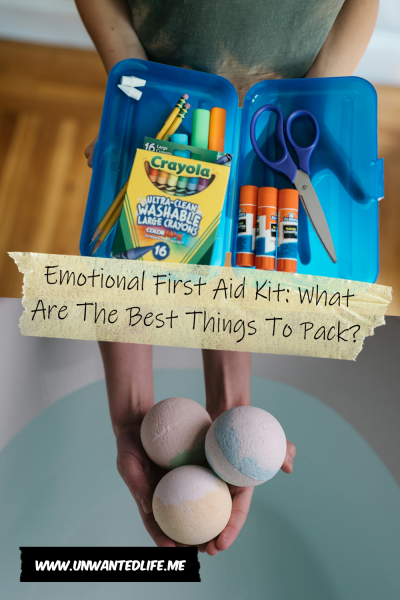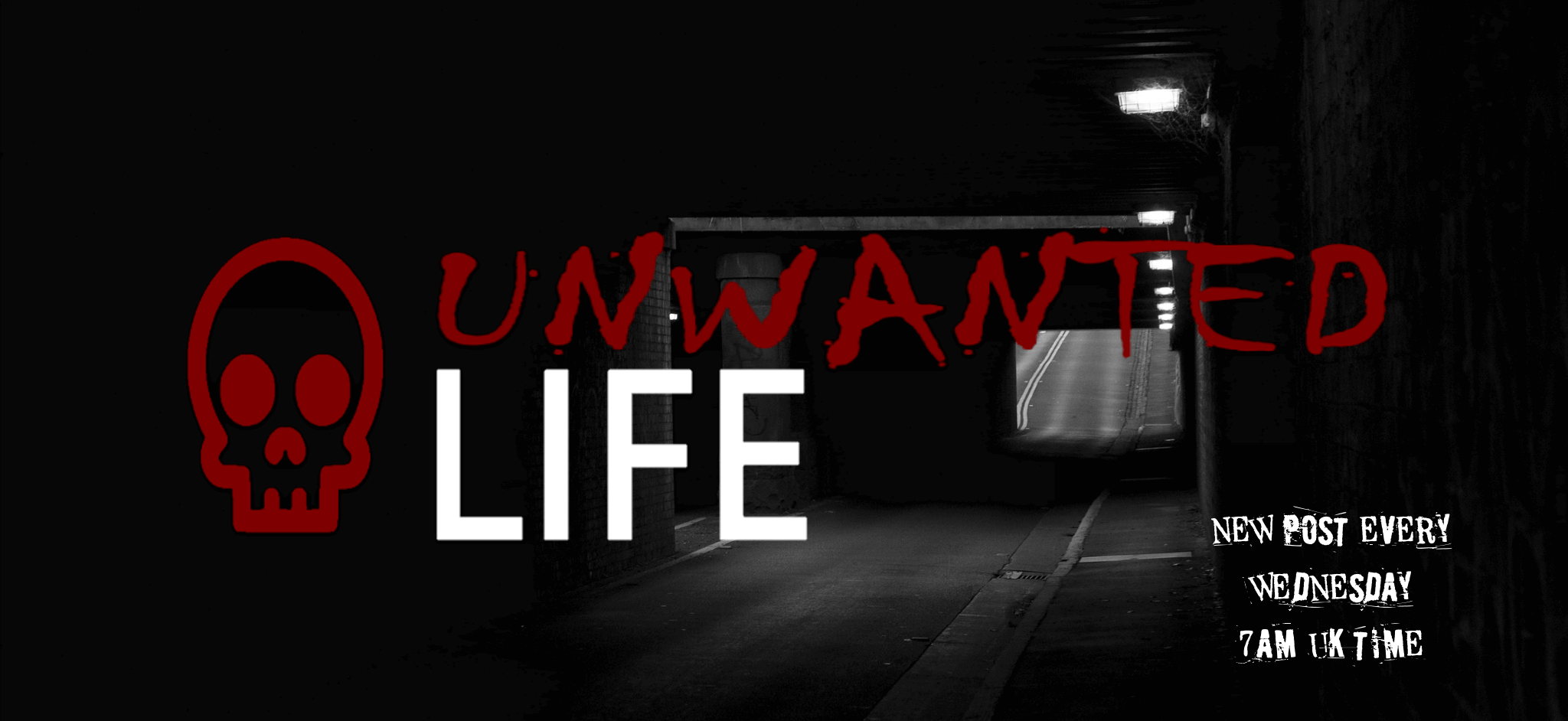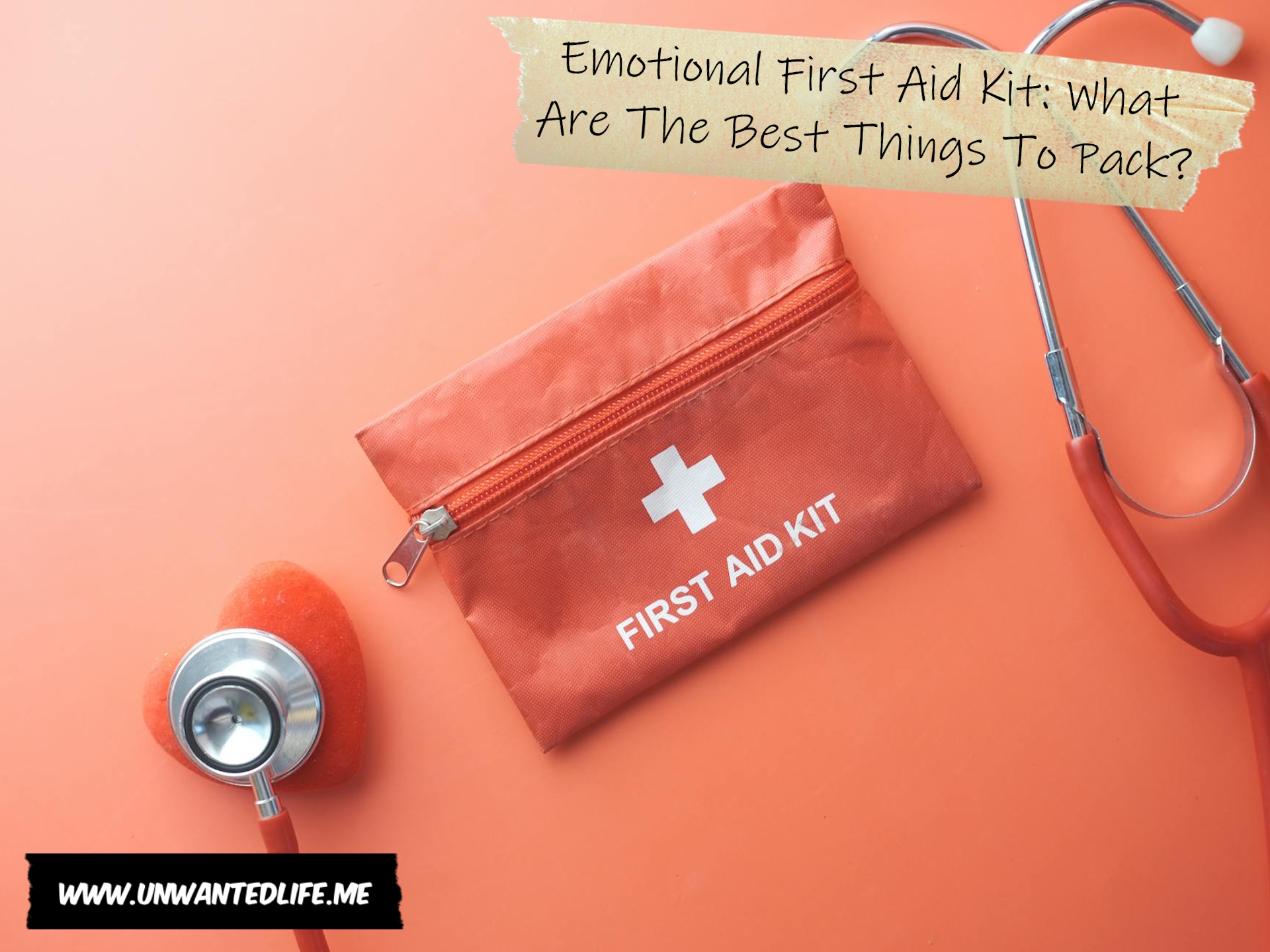As we seek to get mental health taken more seriously and change the mindset of the world, I bring you the emotional first aid kit. I hope you embrace the concept.
Why Build An Emotional First Aid Kit?
Society, for the most part, has made a significant effort to help people recognise that mental health is just as important as physical health. But more can be done. Therefore, just like we have first aid kits for cuts and bruises, having an “emotional first aid kit” can be incredibly helpful for navigating difficult feelings and situations.
Creating our own emotional first aid kit will help us deal with things when they become hard to handle. It will also help us figure out what makes us feel good and what works for us in our time of need (Childline, n.d.).
Ideas For Building Our Own Emotional First Aid Kit
Our emotional first aid kit can be a mental checklist, a written list, or even a collection of physical items that remind us of helpful strategies (self-nudging). For example, a rough stone for grounding or a herbal tea bag, so we can have a drink that helps us relax. The key is to identify the tools and techniques that resonate with us and make them readily accessible when we need them.
By consciously building and utilising our emotional first aid kit, we can become more resilient in the face of emotional challenges and navigate our inner world with greater awareness and skill.
Immediate care
Evidence suggests that when we react to something, the whole emotional process takes 90 seconds. After that, any continued emotional response is because we’ve chosen to stay in that emotion (Robinson, 2020).
This is a perfect time to practise some breathing exercises to help manage our emotions and the situation. A series of simple deep breaths could work well here, or something a bit more advanced, like box breathing.
Another option, which might be better depending on the situation, is to try a grounding technique. For example, using the 5-4-3-2-1 technique or touching something textured, like our jeans.
Alternatively, doing some form of simple exercise can help. For example, stretching or shaking out our limbs, tensing and releasing different muscle groups, or working around the room. There are also self-soothing methods that can help, such as stroking our arms or holding our own hands.
Challenge thoughts and feelings
Identify the emotion by naming it. Acknowledging the emotion can lessen its intensity and give us a sense of control and understanding about what’s happening. If we’re able to, journaling about the thoughts that are fuelling the emotion will be useful. While journaling, consider writing about what happened, what our minds are telling us, and what fears and worries might have been triggered.
Remember, every situation is also an opportunity to grow, so we can also ask ourselves, what can we learn from this, what are the potential benefits or opportunities, and is this situation as catastrophic as it feels right now? The latter challenges a potential cognitive bias.
We can learn some techniques to help challenge any unwanted thoughts, such as reframing or putting our thoughts on trial. Alternatively, ask ourselves if our unwanted thoughts are based on facts or on an assumption, what a friend would tell us in this situation, what other ways are there to look at the situation, etc.
A reality check can also be useful, where we ask ourselves how much this actually matters and if it’ll matter tomorrow, next week, next month, or in a year from now. Because it’s happening to us, we often see situations as having vastly more importance than they actually do, because we’re prone to the spotlight effect. But really, most of the things we thought were embarrassing, most people won’t even remember.
Longer-term support and prevention
Nothing is better than prevention, so take steps to recognise situations, people, or topics that tend to evoke strong negative emotions. Journaling about it can be very useful in this regard. Then, we can develop strategies for managing these triggers and include them in our emotional first aid kit.
Practice healthy coping strategies until we find ones that work best for us when it comes to dealing with stress and other difficult emotions. What works for one person doesn’t always work for the next, so finding what does work for us on an individual level will help us better manage future situations.
Lean on our social support network, or if needed, work on expanding our social support network. Include a reminder of the people and organisations we can reach out to in our emotional first aid kit. This can be family, friends, a therapist, or an organisation like the Samaritans.
Create a list of ways to practise self-compassion, as we often don’t treat ourselves with the same level of kindness and understanding as we would others in the same situation. Also, remind ourselves that everyone experiences difficult emotions.
Work on what our boundaries are and then include those in our emotional first aid kit, so we don’t forget and can refer back to them when needed. As we experience more situations, we may find we need to create new boundaries as well.
Practice mindfulness and meditation, and while we’re at it, make sure to prioritise self-care. One thing we could do is use our emotional response as a guide for when we need to make an extra effort with our self-care, such as granting more time to our hobbies. Then, include that in our emotional first aid kit.

Putting Our Emotional First Aid Kit Together
Below is an example of what our emotional first aid kit could contain:
- A small notepad.
- A textured object.
- A list of breathing exercises.
- A list of grounding techniques.
- Template or guide for thought challenges we could use, or a list of questions you could ask ourselves.
- Stickers or cards with supportive memories written on them, or motivational and supportive comments/quotes.
- List of self-care activities.
- Meditation guide.
- Earplugs.
- Sun glasses.
- Stress ball.
- Fidget toy.
- Calming scent.
- A small card with details of people and organisations from your social support network that you can reach out to.
- A small object that we can talk to, like a mini teddy bear or an inner demon.
- List of ways to be kind to ourselves.
- A list of affirmations we could say to ourselves.
- A reminder of our boundaries.
- Tissues.
- A small snack, because we can get hangry.
Summary
An emotional first aid kit might not always help us avoid the stresses of life, but it’ll help with our resilience and how we bounce back. The more compact we can make the emotional first aid kit, the better, then it’ll be easier to have with us for when we might need it.
An emotional first aid kit just gives us another tool to use to look after our wellbeing. But remember, we’re all different, so our first aid kit should be unique to you (Childline, n.d.).
As always, leave your feedback in the comments section below. Also, please share your experiences with having an emotional first aid kit in the comments section below as well. Don’t forget, if you want to stay up-to-date with my blog, you can sign up for my newsletter below. Alternatively, click the red bell icon in the bottom right corner to get push notifications for new articles.
Lastly, if you’d like to support my blog, please find the PayPal and Ko-fi donation payment options below. Until next time, Unwanted Life readers.
References
Childline. (n.d.). Mental Health First Aid Kit. Childline. Retrieved from https://www.childline.org.uk/toolbox/mental-health-first-aid-kit.
Robinson, B. E. (2020, April). The key to greater happiness and peace of mind. Psychology Today. Retrieved from https://www.psychologytoday.com/gb/blog/the-right-mindset/202004/the-90-second-rule-builds-self-control.


This is such a good idea – I love it
Thank you
Great article. Always good to have support when you need it.
Who knew a 90-second rule could be a game-changer? Thanks for the toolkit—now my inner demon has a stress ball to play with! 🧸😂 Seriously though, this is like a Swiss Army knife for my sanity. #EmotionalMacGyver
Who knew a mini teddy bear could be a legit emotional lifesaver? This article is like a Swiss Army knife for my feelings—compact, handy, and way better than just screaming into a pillow. Thanks for the toolkit, now if only I could remember where I put my stress ball… 🧸🔧💬
An emotional first aid kit is an interesting was of describing mental heath self care. I love the idea. I don’t like the teddy bear representation of an “inner demon” though 😭lol. But the tips you’ve listed are pretty solid. I’m very big on journaling too. Especially gratitude journaling as it really does help to keep you grounded
Thanks for commenting
This is such a great idea! I agree that mental health is just as important as physical health. When it comes to breathing exercises, I follow the 4-7-8 technique whenever I need to calm down. But when I’m having a panic attack, sometimes the 4-4-4 breathing exercise helps!
I also have a fidget toy, which helps when I’m feeling anxious or experiencing panic attacks.
https://embracethepandemonium.wordpress.com/
Thank you for sharing the techniques that work for you